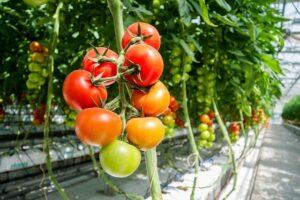The competitiveness of greenhouse vegetable production has increased thanks to developments
The pace of development of domestic greenhouse vegetable production has not slowed down in recent years, thanks to support schemes and favorable credit opportunities, modern developments have been implemented in the sector.

(Photo: Pixabay)
As a result of the investments, the production of greenhouse tomatoes, peppers and snake cucumbers has also increased significantly – this was revealed in the joint overview of the National Chamber of Agriculture and the Hungarian Vegetable and Fruit Interprofessional Organization (FruitVeB). The competitiveness of domestic greenhouse vegetable production has increased significantly. In recent years, world-class developments have been implemented in the sector thanks to rural development tenders.
The production area has also expanded thanks to the investments
In the case of greenhouse tomatoes, the production area has increased by approximately 110 hectares, thanks to subsidies and favorable credit opportunities, so it now exceeds 310 hectares. Of the 150-160 thousand tons of tomatoes produced, 75-80 percent are berry and cluster types, the rest are cherry and cocktail tomatoes. Domestic producers can supply themselves with cocktail and cherry tomatoes from April to October, and we are self-sufficient in cluster tomatoes from the beginning of April, from which point the production volume increases so much that the domestic market can no longer absorb it, so we export tomatoes until September.
Currently, farmers are engaged in greenhouse pepper cultivation on 1,114 hectares, and the annual harvest reaches 140 thousand tons
The turnover of so-called stuffed (tv) peppers has increased significantly in recent years, but the demand for large, colorful and sweet peppers is growing noticeably. Since the latter is still relatively scarce in domestic production, the sector is making serious efforts to develop the cultivation of colored pepper types, especially in the case of Kapia pepper or Pritamin pepper. The surface area of cucumbers grown has doubled in the last 8 years, and the yield has increased 2.5 times. Currently, cucumbers are grown on about 120 ha, mostly in modern growing equipment, producing more than 40,000 tons.
Domestic grown vegetables can be among those fresh market products where quality supply and year-round supply to supermarket chains are possible and possible
Consequently, our greenhouse production provides safe, high-quality and timely products to the domestic and international markets. The quality of grown vegetables from Hungarian production far exceeds that of imported goods delivered from thousands of kilometers, as they are delivered fresh to supermarket chains every day. All this is naturally reflected in the taste and enjoyment value of the vegetables. In addition, the vitamin content and food safety of tomatoes, peppers, cucumbers and lettuce grown in Hungarian greenhouses are both very high. Consumers do not have to worry about pesticide residues, as in 80-90 percent of Hungarian grown peppers, tomatoes and cucumbers, producers use biological pest control using natural enemies of pests.
NAK
Related news
Nébih orders epidemiological quarantine on three pig farms in Somogy
🎧 Hallgasd a cikket: Lejátszás Szünet Folytatás Leállítás Nyelv: Auto…
Read more >EU Commissioner: Farmers’ income support under the Common Agricultural Policy will remain guaranteed
🎧 Hallgasd a cikket: Lejátszás Szünet Folytatás Leállítás Nyelv: Auto…
Read more >NAK: the year begins with difficult conditions in agriculture
🎧 Hallgasd a cikket: Lejátszás Szünet Folytatás Leállítás Nyelv: Auto…
Read more >Related news
The 6 most important payment trends in 2026:
🎧 Hallgasd a cikket: Lejátszás Szünet Folytatás Leállítás Nyelv: Auto…
Read more >Tourism continues to expand dynamically
🎧 Hallgasd a cikket: Lejátszás Szünet Folytatás Leállítás Nyelv: Auto…
Read more >FEOSZ creates a certificate for consumer-friendly web stores
🎧 Hallgasd a cikket: Lejátszás Szünet Folytatás Leállítás Nyelv: Auto…
Read more >







